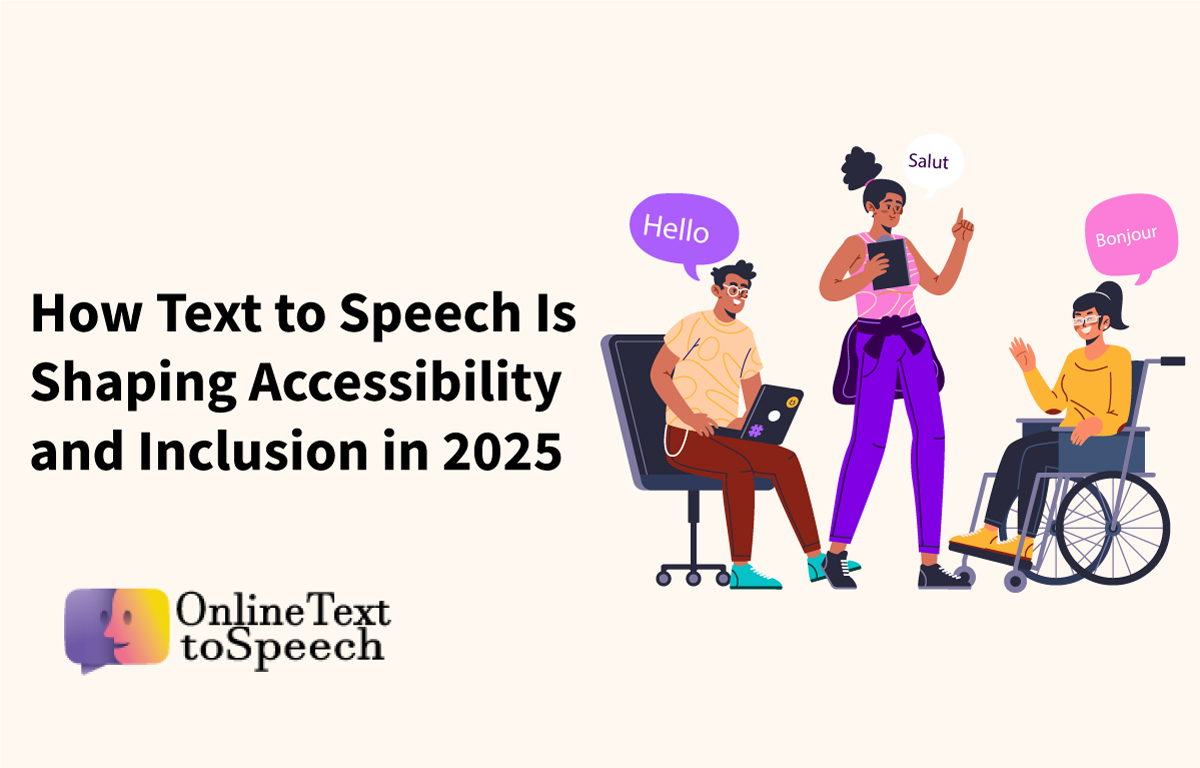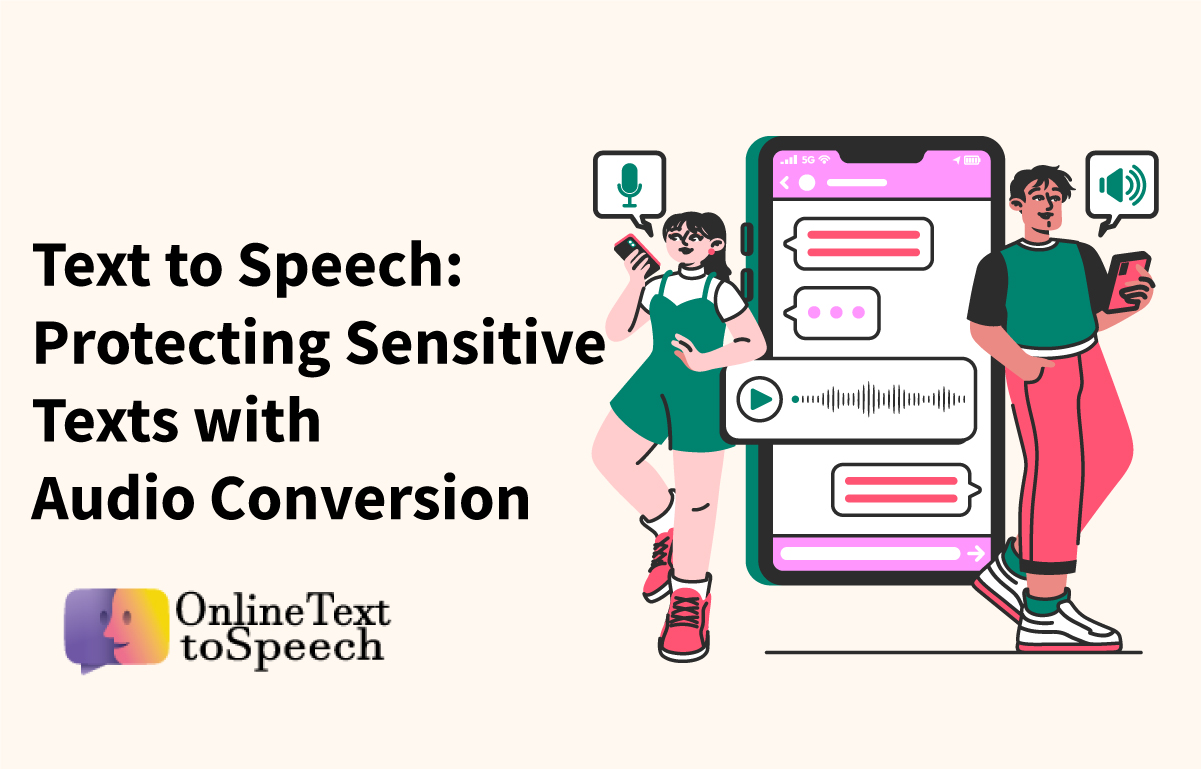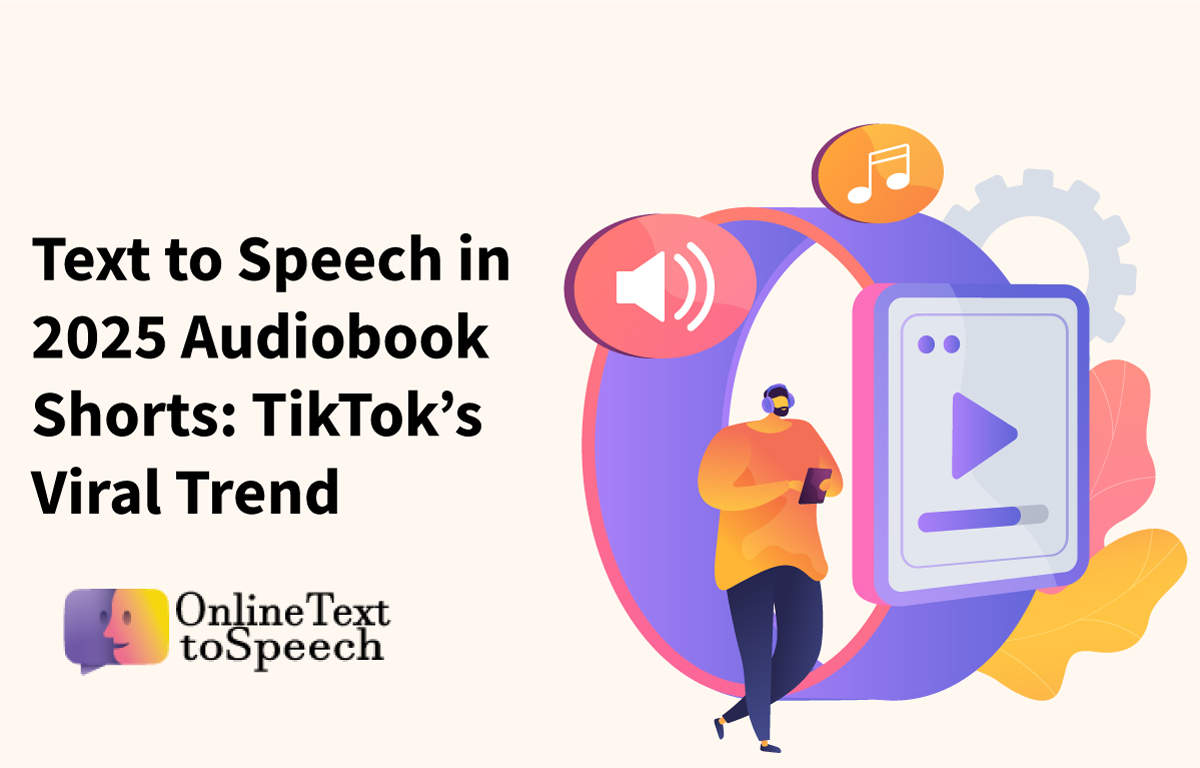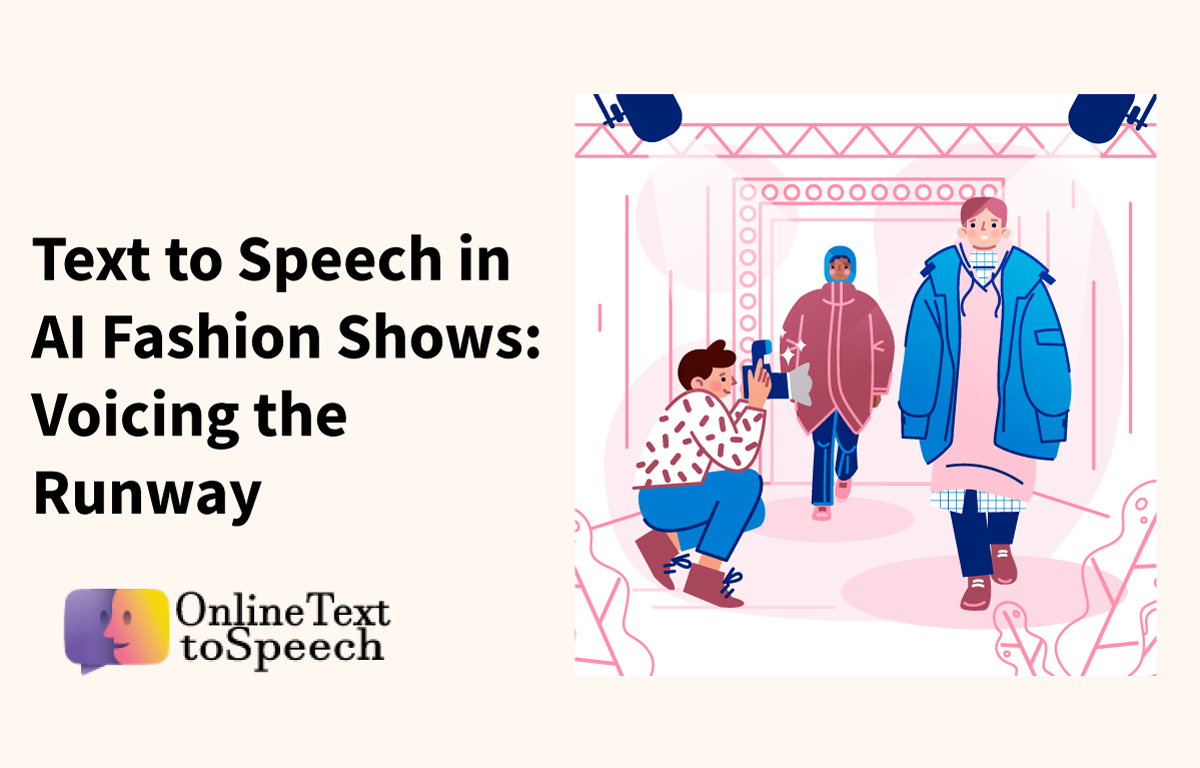
In 2025, the conversation around digital accessibility and user inclusivity has moved far beyond traditional compliance checklists. It’s now a proactive mission — one that platforms, content creators, and educators are embracing globally. One of the most transformative technologies driving this change is text to speech. No longer just a convenience, this innovation has become a lifeline for millions, helping bridge the gap between information and access.
With AI, neural networks, and web-based applications evolving rapidly, text to speech has found a powerful new purpose — reshaping how we communicate, educate, and create more inclusive spaces across the digital world.
The Rise of AI Text to Speech in Everyday Life
The evolution of AI text to speech technologies has been nothing short of revolutionary. What once sounded robotic and disjointed now offers seamless, natural-sounding voices that mimic human intonation, tone, and rhythm. This advancement has significantly impacted accessibility, particularly for people with visual impairments, dyslexia, or learning disabilities.
As AI continues to refine pronunciation, accents, and emotional expressiveness, these voices are no longer just tools — they’re digital companions, guiding users through educational material, narrating news articles, and even reading aloud daily emails. The growing use of AI text to speech is not just about accessibility; it’s about autonomy.
Why Text to Speech Free Tools Are Driving Global Digital Equity
Digital equity isn’t just a Western ideal anymore. With the global rise in smartphone usage and internet access, people from diverse backgrounds are turning to text to speech free tools as alternatives to expensive screen readers or educational software.
Free access enables students in underfunded regions to study using spoken content. It supports multilingual learners in processing complex texts, and it AIds elderly users who may struggle with screen reading or fine motor skills.
In this global push toward inclusivity, tools that offer text to speech free functionalities are reducing economic and linguistic barriers, especially when they’re avAIlable without sign-up or software installation.
Exploring the Future of Text to Speech Voices for Emotional Connection
What makes a voice relatable? Emotion. And in 2025, one of the most exciting advancements is the personalization of text to speech voices. Developers are integrating emotional nuance, pitch control, and situational tone shifts, making digital voices more human than ever.
For users with social anxiety or non-verbal communication preferences, these dynamic text to speech voices create genuine interaction without the pressure of face-to-face conversation. Even in mental health apps, hearing a warm, reassuring voice can reduce stress and foster a sense of comfort. The psychology behind these applications is clear: voice matters, and the closer it sounds to a real human, the deeper the connection.
How Text to Audio Free Solutions Empower Multitasking and Learning
In an era of content overload, text to audio free tools are solving a critical challenge: information absorption during multitasking. Whether someone is commuting, cooking, or working out, listening to written content enables better time management without sacrificing comprehension.
These tools convert articles, emails, or eBooks into spoken word with high accuracy, allowing users to “read” without using their eyes. Professionals and students alike are embracing text to audio free applications for passive learning — an efficient strategy that enhances productivity while promoting accessibility for individuals with limited screen time due to medical or personal reasons.
Embracing the Potential of Text to Speech Online for Global Inclusion
The power of text to speech online lies in its accessibility. Cloud-based platforms require no installations, no downloads — just a browser and an internet connection. This simplicity has made online tools the go-to option for schools, libraries, and NGOs promoting education and literacy in remote or rural areas.
By eliminating compatibility issues with devices or operating systems, text to speech online services have become essential components of digital inclusion strategies. Their responsiveness and cross-device functionality empower more users than ever to engage with content on their own terms.
The Human Side of Technology: Text to Voice Generator in Therapy and Communication
One of the lesser-discussed but profound impacts of modern TTS is in therapeutic and personal communication. Individuals with speech impairments, ALS, or autism often rely on text to voice generator tools to express themselves in real-time.
These voice generators have transitioned from clunky, delayed outputs to fast, natural interactions. With real-time emotional tone adjustments, users are not just speaking — they’re communicating with authenticity. Therapists are also adopting text to voice generator platforms as support tools in speech-language therapy and social skills training, proving that digital speech isn’t just functional — it’s transformational.
Why Free Online Text to Speech Is a Lifeline for Students and Educators
The demand for free online text to speech tools has surged in both traditional classrooms and virtual learning environments. With reading comprehension challenges on the rise, students often benefit from hearing their coursework read aloud while following along visually.
Educators, especially those supporting students with IEPs or ESL learners, rely on these platforms to reinforce understanding and promote inclusive learning.
The avaIlability of free online text to speech not only enhances learning outcomes but also saves institutions from investing in expensive assistive technology.
The Science Behind Cognitive Processing and Text to Speech Generator Tools
When we read, our brAIn decodes visual symbols into phonetic sounds. However, when we listen, especially with tools like a text to speech generator, the brAIn processes information differently — often more effectively. This dual-processing theory supports auditory learning, especially for those with ADHD, dyslexia, or limited focus spans.
Text to speech generator platforms leverage this by turning passive reading into active listening. The ability to adjust playback speed and voice type further supports custom learning strategies, improving memory retention and long-term comprehension.
Content Consumption Trends and the Shift Toward Text to Speech Free Options
With podcasts, audiobooks, and smart assistants dominating consumer attention, text to speech free tools are riding the wave. Readers are increasingly opting to listen to news, blogs, and even social media captions rather than scroll endlessly.
As creators adapt to this shift, integrating speech into written content is becoming the norm. From media outlets to personal blogs, offering audio accessibility is not just inclusive — it’s expected. In this evolving digital landscape, offering text to speech free functionality enhances user experience and expands audience reach.
The Growing Ecosystem of AI Text to Speech in Smart Devices
Smart homes and IoT ecosystems now regularly utilize AI text to speech to deliver alerts, weather updates, reminders, and more. Devices like smart speakers and wearable tech are embedding speech engines that read texts, emails, or notifications aloud.
The intelligence behind AI text to speech makes interactions feel natural, anticipatory, and personalized. It’s no longer about programming a response — it’s about interpreting context, recognizing mood, and providing helpful audio responses in real-time. These smart voice integrations are rapidly becoming essential features of accessible living environments.
Why Inclusive Design in 2025 Relies on Text to Speech Online
Today, accessibility isn’t a design afterthought — it’s a requirement. Web developers and UI/UX teams are incorporating text to speech online capabilities directly into websites and apps. This isn’t just for compliance; it’s about enabling diverse user experiences.
Whether it’s an e-commerce site offering audio product descriptions or a news outlet providing audible articles, the presence of text to speech online enhances navigation and engagement. More than ever, brands are being judged on how inclusive their platforms are — and TTS plays a central role in meeting those expectations.
Personalized Learning Experiences Through Text to Audio Free
Customization is the new standard. Modern learners expect platforms to adapt to their individual needs. Text to audio free tools provide that flexibility, allowing users to control voice speed, gender, accent, and playback timing.
In academic contexts, this personalization helps students absorb content in a way that works best for them. For lifelong learners, it means consuming self-development material, language lessons, or professional development courses while on the go — a style that matches the demands of busy lifestyles and individualized preferences.
Ethical Considerations Around Text to Voice Generator Use
With great technology comes the need for responsible use. Text to voice generator tools are powerful, but they also rAIse questions about authenticity and consent. As deepfake voices become more realistic, ensuring ethical deployment is vital.
Content creators and organizations must ensure that voice cloning or mimicry doesn’t infringe on privacy or create misleading representations. Transparent policies and traceable usage are necessary to protect both creators and consumers as the technology continues to evolve.
The Global Movement Toward Free Online Text to Speech Accessibility
Governments and non-profits are starting to adopt free online text to speech tools at scale, particularly for public service announcements, emergency alerts, and educational outreach. These efforts are helping close the accessibility gap in areas with lower literacy rates or limited access to traditional schooling.
Through open platforms like this online text to speech tool, users around the world are gaIning consistent access to spoken content in multiple languages — all without subscription fees or restrictive terms. This democratization of voice technology is a step toward a truly inclusive digital future.
FAQs
It’s widely used for accessibility, enabling users with reading difficulties or visual impairments to listen to written content.
Yes, they now mimic natural human emotions, tone, and inflection thanks to AI advancements.
Absolutely. Most modern tools run directly in your browser for convenience and speed.
Many do. They allow instant vocal output as users type, which is essential for live communication support.
Yes, reputable tools follow data privacy protocols, but always choose platforms with transparent policies.
Final Thoughts
The evolution of text to speech in 2025 marks a monumental shift toward digital inclusivity. As these tools continue to integrate with dAIly life, education, and accessibility platforms, they are not only reshaping how we consume content — they’re reshaping how we participate in the digital world. The line between necessity and convenience is blurring, and that’s a powerful step forward for everyone.





